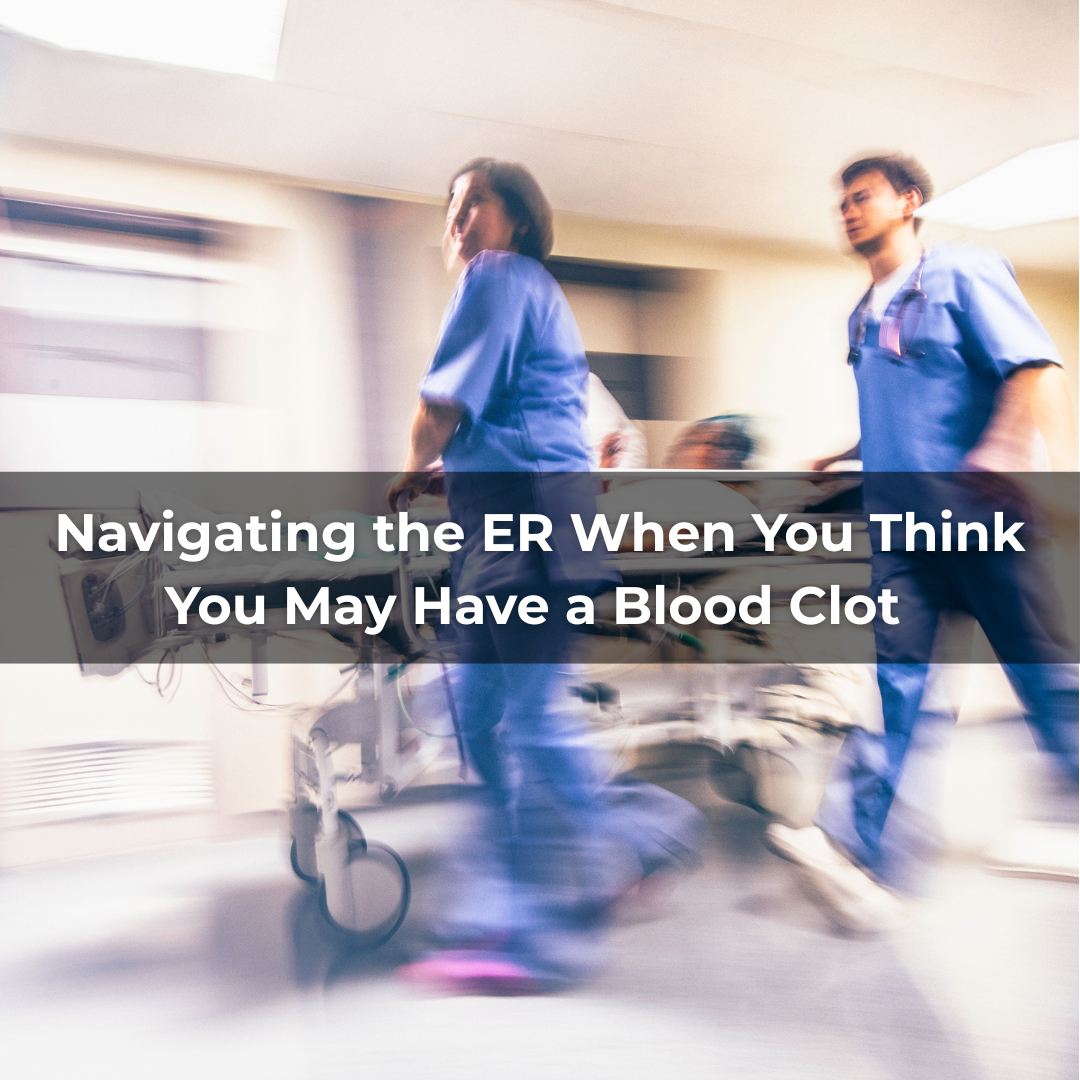What to Know, What to Expect, and How to Advocate for Yourself
By Jeffrey A. Kline, MD, Associate Chair of Research, Department of Emergency Medicine at Wayne State University and Member of NBCA’s Medical and Scientific Advisory Board.
If you think you might have a blood clot, getting to the emergency room (ER) quickly can save your life. Blood clots — whether in the leg (deep vein thrombosis, or DVT), lung (pulmonary embolism, or PE), or elsewhere — are medical emergencies that need fast evaluation and treatment.
This guide will help you understand the warning signs, what to tell doctors, what tests to expect, and how to speak up for yourself in the ER.
Why Quick Action Matters
When diagnosed early, pulmonary embolism (PE) can be easily and effectively treated with medicines that prevent further clotting.
Without treatment, PE can rapidly become life-threatening by blocking blood flow to the lungs.
Most PEs are diagnosed in the ER. Recognizing new or worsening symptoms — and clearly sharing them — can help doctors and nurses act quickly.
Common pulmonary embolism symptoms include:
- Shortness of breath, especially new or unexplained
- Chest pain that worsens with deep breathing
- Fatigue or lightheadedness
- Coughing, sometimes with blood
Symptoms may start suddenly or develop gradually over days. Even if they come and go or seem mild, take them seriously and seek emergency care.
Know the Warning Signs of a Blood Clot
Blood clots can form in different parts of the body, and symptoms depend on where the clot is located.
Deep Vein Thrombosis (DVT) Symptoms
- Swelling in one leg (or arm)
- Pain or tenderness not caused by an injury
- Skin that feels warm to the touch
- Red or discolored skin
Pulmonary Embolism (PE) Symptoms
- New or unexplained shortness of breath
- Sharp chest pain or discomfort, especially when breathing deeply
- Rapid heartbeat
- Lightheadedness or passing out
- Unexplained cough, sometimes with blood
If you notice these symptoms, call 9-1-1 or go to the nearest ER immediately.
What to Tell the ER Team
When you arrive, share details that can help the medical team quickly assess your risk for blood clots:
- Recent surgery, hospitalization, or long travel
- Use of hormonal birth control (including the vaginal ring) estrogen therapy, pregnancy, or postpartum status
- Personal or family history of blood clots or clotting disorders
- Any cancer treatment, major injury, or infection
- All medications you’re taking, especially blood thinners
Sharing this information up front helps doctors order the right tests and start treatment faster.
What to Expect in the ER
You may receive these tests or procedures:
- Blood tests (including a D-dimer test)
- Ultrasound of your legs and/or arms (to check for DVT)
- CT scan of your chest (to look for PE)
- Oxygen or IV fluids, if your oxygen or blood pressure is low
If a clot is found, treatment often begins immediately with anticoagulants (blood thinners) such as:
- Apixaban (Eliquis)
- Rivaroxaban (Xarelto)
In some severe cases, doctors may use clot-dissolving medication or specialized catheters to remove the clot.
Most patients with DVT and many with PE patients can safely go home without hospital admission, depending on their condition and support.
Typical treatment lasts three months for a first-time DVT and six months for a first-time PE, but your doctor will tailor this plan to your needs.
Questions to Ask Before You Leave
Don’t hesitate to speak up and ask the ER team:
- Where is the clot, and how serious is it?
- What medication am I being given, and what are the side effects?
- What warning signs should make me return to the ER right away?
- Who will manage my care after I leave the ER?
If you’re feeling anxious or overwhelmed, ask a family member or friend to take notes or record instructions.
After You Leave the ER
Before going home, make sure you understand:
- Medication information (name, dose, when and how to take it)
- Follow-up plans and next appointment (when and with whom)
- Warning signs that need immediate attention (new swelling, bleeding, chest pain, or shortness of breath)
Keep your discharge paperwork and bring it to your next medical visit.
Taking Care of Yourself
A blood clot diagnosis or scare can be stressful. It’s normal to feel anxious or uncertain. Taking steps to support your emotional and physical health can make recovery easier:
- Leaning on family and friends for support
- Joining a blood clot support group, such as NBCA’s Facebook support group
- Asking your healthcare team questions until you feel confident managing your care
Remember, you are never bothering anyone by speaking up about your symptoms — your voice could save your life!
Key Takeaways
- Go to the ER immediately if you experience symptoms of blood clot.
- Share your full medical history and any risk factors with your care team.
- Ask questions and make sure you understand your diagnosis and treatment plan.
- Follow up after your ER visit to prevent future clots and manage your health.
Learn More
Download our New Patient Guide, which NBCA developed for newly diagnosed patients and their caregivers to help answer common questions and provide the resources to help you navigate life, post-diagnosis.





